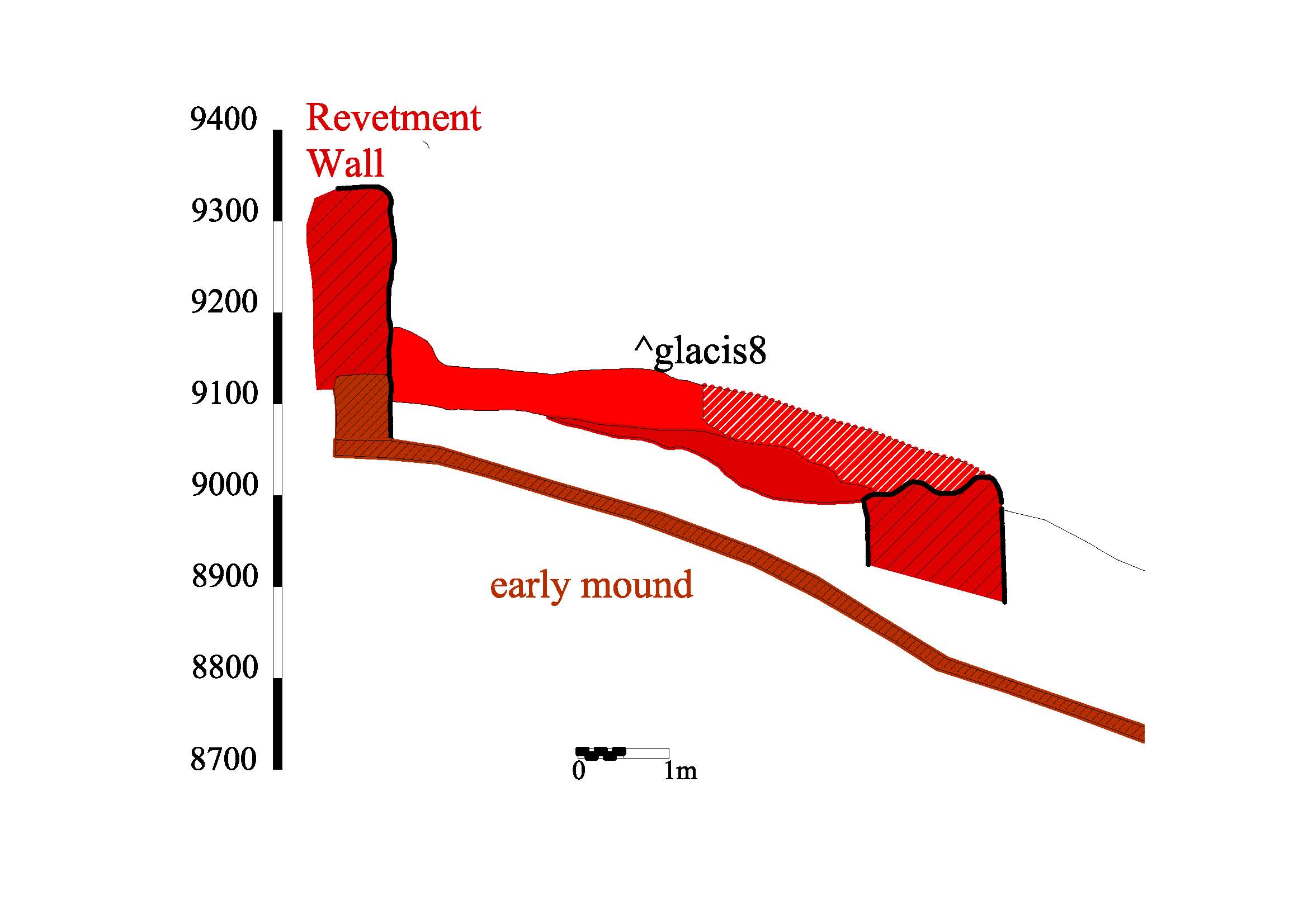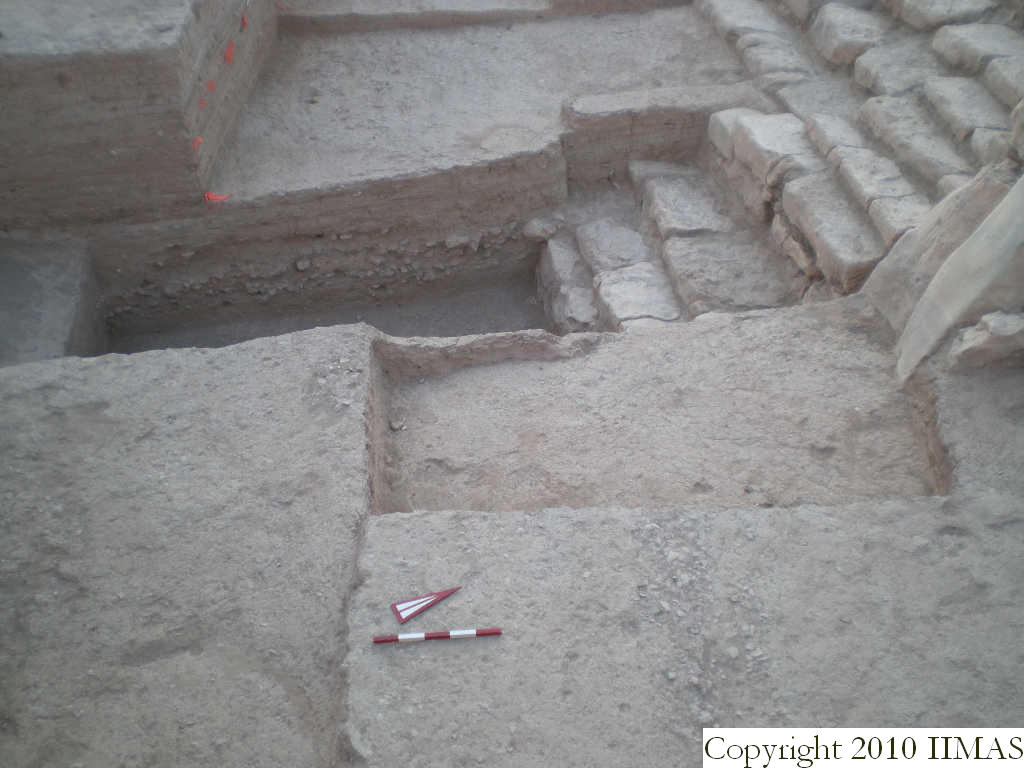Back to top: Phase 3pJ6B within unit J6
Glacis for revetment wall
During this phase, a thick band of reddish compacted earth mixed with mudbricks glacis 8 is laid at the base of wall 12. The glacis has the function of protecting the base of the wall.


Back to top: Phase 3pJ6B within unit J6
Floors in the Plaza
The earliest floor found in J6 in front of the betili is f312, a hard and compact red-orange surface, related to the use of the staircase and the Plaza.

Back to top: Phase 3pJ6B within unit J6
Typology
The pottery found in the layers date to the ED III period Link to pottery analysis of this phase. The glacis 8 was rich in ceramics, as well as clay lumps and seal impressions. In contrast, glacis 6 contained a small amount of pottery.